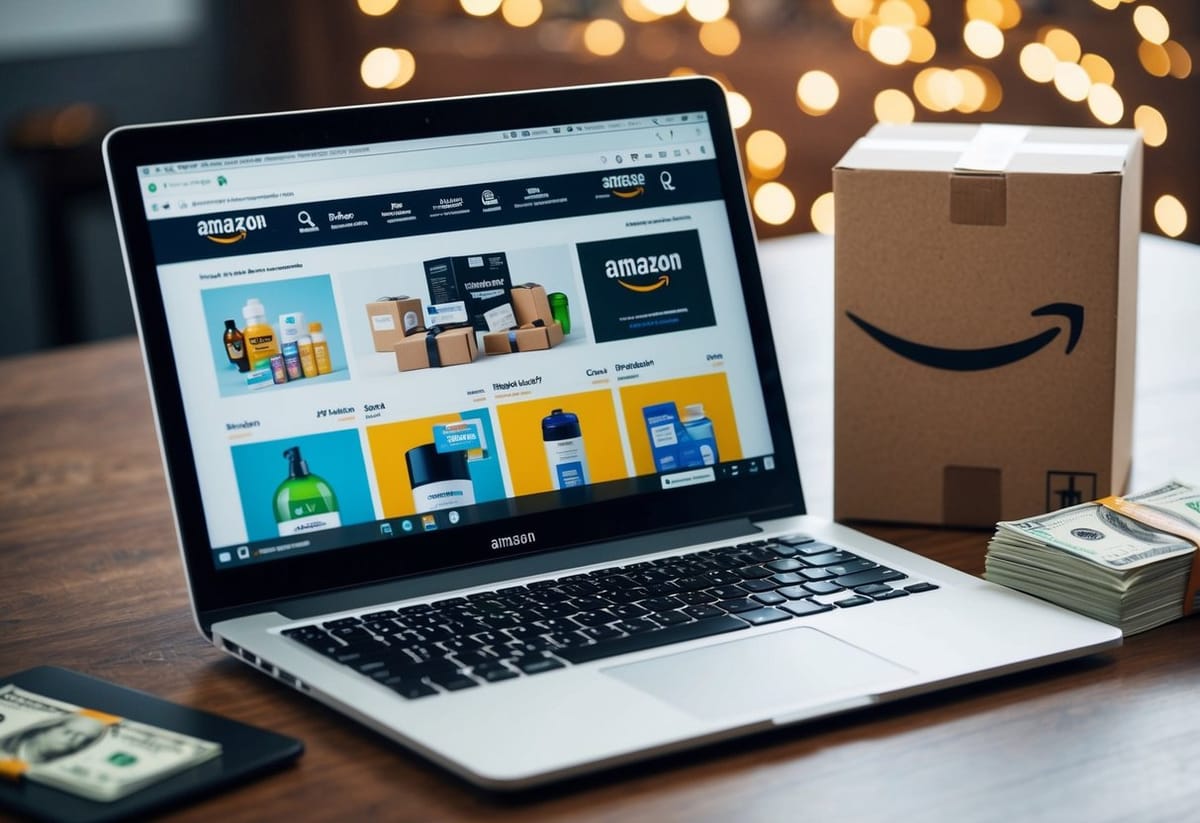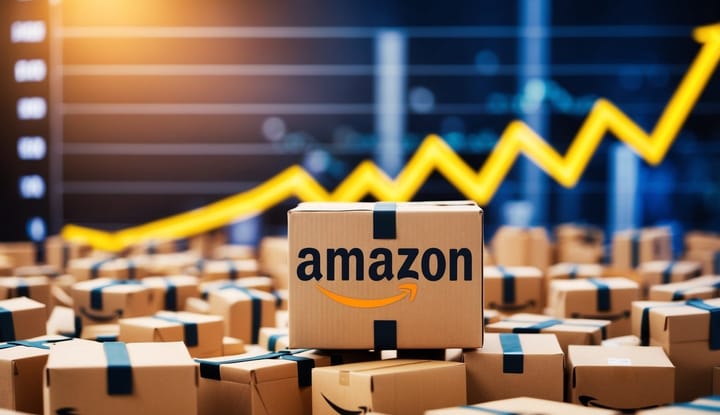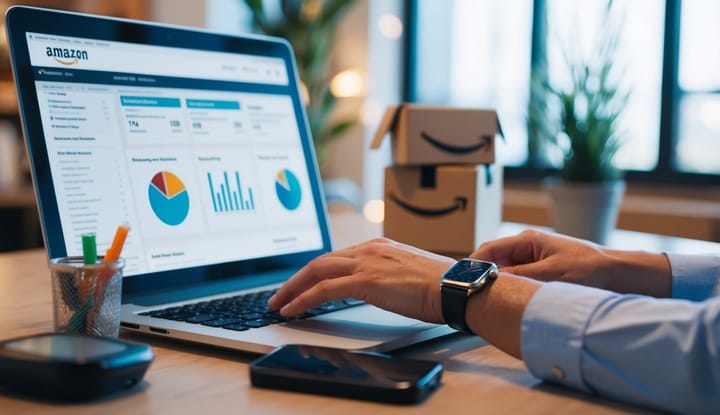Make a Living Selling on Amazon USA: Proven Strategies

Selling on Amazon USA opens up a world of opportunities for entrepreneurs worldwide. Many people dream of building a profitable online business, and Amazon's platform makes it possible. The e-commerce giant welcomes sellers from numerous countries, allowing them to tap into the massive U.S. market.
With the right strategy and dedication, it is possible to make a living by selling on Amazon USA. Sellers can choose from various business models, such as private labeling, wholesale, or retail arbitrage. Success often depends on factors like product selection, pricing, and marketing efforts.
Starting an Amazon business requires careful planning and hard work. Sellers need to research products, set up their accounts, and learn about Amazon's policies. While challenges exist, many have found success and built thriving businesses on the platform.
Key Takeaways
- Sellers from many countries can start an Amazon USA business
- Success depends on product selection, pricing, and marketing
- Building a profitable Amazon business takes planning and effort
Setting Up Your Amazon Seller Account
Creating an Amazon seller account is the first step to selling on the platform. The process involves choosing a selling plan, providing required documentation, and learning to use the seller dashboard.
Understanding Different Selling Plans
Amazon offers two main selling plans: Individual and Professional. The Individual plan suits sellers who expect to sell less than 40 items per month. It has no monthly fee but charges $0.99 per sale. The Professional plan costs $39.99 per month and is better for those selling more than 40 items.
The Professional plan includes extra features like bulk listing and reporting tools. It also allows sellers to compete for the Buy Box and sell in more categories. Sellers can switch between plans as their business grows.
Essential Documentation
To set up an Amazon seller account, sellers need several key documents. These include:
- A valid government-issued ID
- Tax information (SSN or EIN)
- Bank account details for payments
- Credit card for seller fees
Sellers must provide accurate information to comply with Amazon's policies. The IRS requires tax details for income reporting. A business email and phone number are also needed for account verification and customer service.
Navigating the Seller Dashboard
The Seller Central dashboard is the main hub for managing an Amazon business. It provides tools for:
- Listing products
- Managing inventory
- Processing orders
- Tracking sales
Sellers can view performance metrics and respond to customer messages here. The dashboard also includes sections for advertising and running promotions.
New sellers should take time to explore each section. Amazon offers tutorials and help guides within Seller Central. Understanding these tools is key to running a successful Amazon business.
Choosing Your Fulfillment Method
Picking the right way to ship products is key for Amazon sellers. It affects costs, customer service, and how much work you need to do. Let's look at the main options.
Fulfillment by Amazon Overview
FBA lets Amazon handle storage, packing, and shipping. Sellers send items to Amazon warehouses. When orders come in, Amazon ships them out. This method works well for many sellers.
FBA offers some big perks. Products become Prime-eligible. This can boost sales. Amazon takes care of customer service and returns. Sellers save time on packaging and trips to the post office.
But FBA has costs. Amazon charges fees for storage and handling. These can add up, especially for large or slow-moving items. Sellers must also prep products to meet Amazon's rules.
Seller-Fulfilled Options
Some sellers choose to handle shipping themselves. This is called Fulfillment by Merchant (FBM). With FBM, sellers store their own inventory. They pack and ship orders as they come in.
FBM gives sellers more control. They can keep a closer eye on stock. It may cost less for some types of products. Sellers can also add personal touches to packaging.
FBM requires more work from sellers. They must deal with all shipping and customer service. It can be hard to offer fast shipping like Prime. Sellers need space to store products.
Sourcing and Listing Products

Finding the right products and creating effective listings are key steps to selling on Amazon. These processes require research, strategy, and attention to detail.
Identifying High-Demand Products
Product research is crucial for success on Amazon. Look for items with high search volume and low competition. Use Amazon's Best Sellers list and tools like Jungle Scout to spot trends. Consider seasonal products and evergreen items that sell year-round.
Focus on products with good profit margins. Calculate all costs, including Amazon fees, shipping, and storage. Aim for items priced between $15 and $50, as they often sell well.
Explore different product categories. Some may have less competition but strong demand. Check product reviews to find gaps in the market you could fill with improved versions.
Working With Suppliers
Build relationships with reliable suppliers to ensure product quality and timely delivery. Start by contacting manufacturers directly or using wholesale directories.
Ask for samples before placing large orders. This helps verify product quality and allows you to test the market. Negotiate prices, minimum order quantities, and payment terms.
Consider private label products. These allow you to create your own brand and have more control over pricing. Many suppliers offer customization options for packaging and product features.
Keep track of inventory levels to avoid stockouts. Set up alerts in your Amazon seller account to reorder when stock gets low.
Creating Successful Product Listings
Write clear, detailed product titles that include key information like brand, size, and color. Use bullet points to highlight main features and benefits.
Take high-quality photos from multiple angles. Include lifestyle images showing the product in use. Add infographics to explain complex features or size comparisons.
Craft compelling product descriptions. Address common customer questions and concerns. Use keywords naturally to improve search visibility.
Encourage customer reviews by following up after purchases. Positive feedback boosts your product ranking and builds trust with potential buyers.
Optimizing Sales and Marketing Strategies
Boosting sales on Amazon requires a mix of tactics. Good product listings and smart marketing help sellers reach more buyers.
Leveraging Amazon SEO
Amazon SEO helps products show up in searches. Use relevant keywords in titles, bullet points, and descriptions. Pick words shoppers use to find items like yours.
A+ content adds pictures and text to detail pages. It can raise sales by up to 10%. Use it to show product features and answer common questions.
Good reviews are key. Ask happy customers to leave feedback. Respond to all reviews, good and bad. This shows you care about buyers.
Expanding Reach with Social Media and Other Platforms
Social media helps build your brand off Amazon. Share product info and deals on Facebook, Instagram, and Pinterest. This drives traffic to your Amazon listings.
Start a blog about your product niche. Write helpful articles that link to your items. This can bring in buyers from Google searches.
Email marketing keeps past customers interested. Send updates about new products or sales. Include links to your Amazon store.
Try influencer marketing. Work with people who have followers in your target market. They can share your products with their audience.
Consider selling on other sites too. This spreads out risk and reaches more buyers. Look into eBay, Walmart, or your own website.
Scaling Your Amazon Business

Scaling an Amazon business involves smart strategies to boost revenue and profits. Sellers can expand their reach and increase sales through product diversification and leveraging Amazon's advanced programs.
Diversifying Your Product Lines
Adding new products can help sellers grow their Amazon business. Look for items that complement existing offerings or tap into new markets. Research trends and customer needs to find promising opportunities. Start small with a few new products, then expand based on performance.
Consider private label products to build a unique brand. This can lead to higher profits and customer loyalty. Bundle related items together as kits or sets to increase average order value. Test different price points to find the sweet spot for maximizing revenue and profits.
Exploring Advanced Amazon Programs
Amazon offers special programs to help sellers scale up. Amazon Handmade caters to artisans selling handcrafted goods. Merch on Demand lets creators sell custom t-shirts and apparel with no upfront costs.
Kindle Direct Publishing enables authors to self-publish e-books and paperbacks. The Amazon Associates program pays commissions for referring customers through affiliate links. Influencers can monetize their following with the Amazon Influencer Program.
Upgrading to a Professional selling plan unlocks extra tools and features. This includes bulk listing capabilities, advertising options, and detailed business reports. These advanced programs can open new income streams and growth opportunities for Amazon sellers.
Frequently Asked Questions

Making money on Amazon involves various strategies and business models. Success rates differ, but some sellers achieve significant profits. Here are answers to common questions about earning income through Amazon.
What are the key strategies for making a profitable income on Amazon FBA?
Effective product research is crucial. Find in-demand items with good profit margins. Optimize listings with strong titles and photos. Use competitive pricing and run promotions. Provide excellent customer service to get positive reviews.
Monitor inventory levels closely. Restock popular items before running out. Consider using Amazon's advertising options to boost visibility. Stay on top of trends and adjust your product offerings accordingly.
How can you earn money from Amazon at home without selling physical products?
Amazon offers several options for earning without inventory. Kindle Direct Publishing lets you self-publish ebooks. Amazon Associates is an affiliate program where you earn commissions promoting products.
Merch by Amazon allows you to design t-shirts and other items without upfront costs. Amazon Handmade is for selling crafts and handmade goods. These options require less capital but still need effort to succeed.
What is the average success rate of Amazon sellers in the USA?
Success rates vary widely among Amazon sellers. Some reports suggest around 10-20% of sellers make significant profits. Many factors impact success, including product choice, pricing, and marketing skills.
New sellers often face challenges in a competitive marketplace. Building a profitable business typically takes time and persistence. Ongoing learning and adapting to changes are important for long-term success.
Is it possible for an Amazon seller to become a millionaire from their business?
Some Amazon sellers have built million-dollar businesses. This level of success is not common but is achievable with the right strategies. High-volume sales, unique products, and efficient operations are often key.
Building a highly profitable Amazon business usually takes years of hard work. Diversifying product lines and expanding to multiple marketplaces can increase growth potential. Reinvesting profits helps scale the business faster.
What types of Amazon businesses are considered the most profitable?
Private label products often offer good profit margins. This involves creating your own brand for generic items. Wholesale can be profitable with the right supplier relationships and pricing strategies.
Online arbitrage and retail arbitrage can yield profits but require more time and effort. Handmade and custom products can command higher prices. Niche markets with less competition sometimes offer better opportunities for profitability.
Ready to Build Your Amazon Business?
Join our mini-course at WAH Academy and get real help picking your selling model, setting up your account, and making that first sale—without the confusion or wasted time.
No guesswork. No fluff. Just the steps you need to start strong.
Tap the button and launch your Amazon business today.



